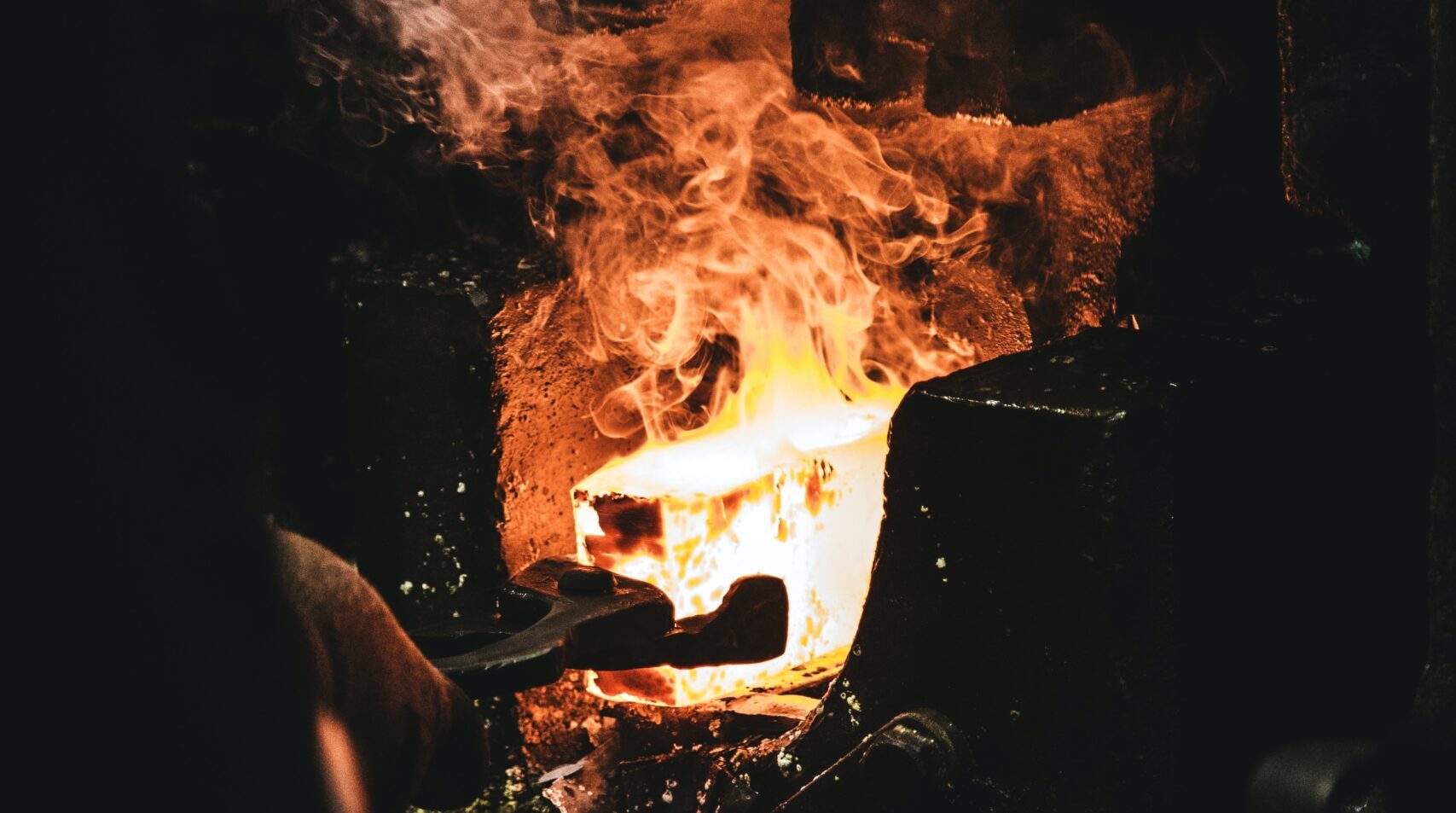Having the right tools for a job is always important and there is no exception when it comes to bladesmithing. From forging and grinding, to heat treatment and finishing, there is a specialized tool for every step of blade making. But what are the essentials that every modern bladesmith should have? Here’s a look at 10 essential tools every modern bladesmith must have.
Forging – Forge
At the heart of every blade is the forge. Bladesmiths must be able to heat steel to the correct temperature and hold it there to be able to shape and form the blade. While there are many types of forges to choose from, the essential tool for bladesmiths is a gas forge. These forges make heating the steel more precise, with adjustable gas settings and higher and more consistent heats.
The choice of forge fuel is also important. Natural gas and propane are the most commonly used fuels and it’s important to choose the one that best suits your budget and workspace. Natural gas is the cleanest and most efficient fuel but can be more expensive, whereas propane is cheaper but dirty burning.
Grinding – Belt Grinder
Once the blade has been forged, it is time to begin grinding and shaping it. This is where a good quality belt grinder comes into its own. Belt grinders allow you to quickly and precisely grind and shape the blade with minimal effort. They come in a range of sizes and can be stationary or bench-mounted, giving you the flexibility to fit it to the size you need.
When choosing a belt grinder, make sure you choose one that is powerful enough to handle the grinding and shaping you need and that will last. Also, make sure you choose the right belt size for your specific needs, as different sizes of belt are best suited for different types and sizes of blades.
Heat Treatment – Kiln
Heat treating will determine the hardness and strength of the blade, and it must be done with precision and care. Hot enough and for long enough will give you the desired characteristics but too much can ruin a blade. The essential tool for heat treatment is a forge, but you’ll also need a way to precisely measure the temperature.
This is where a digital thermometer comes in. It allows you to accurately measure the temperature of the steel, to ensure that you don’t overheat or underheat the blade. It’s also important to choose a thermometer with a wide temperature range, so that it will be able to cover all the temperatures you need.
Tangs – Jig & Rivets
The tang is the part of the knife that extends from the blade into the handle, and is essential for giving the blade strength and rigidity. One of the essential tools for making tangs is a tang cutting jig. This allows you to hold the blade steadily while you cut the tang to exactly the right size and shape. Different jigs will be better suited to different blades and tang shapes, so it’s important to make sure you get the right one.
Making the tang is only half of the job – they need to be securely attached to the handle. For this, you’ll need rivets. These come in a variety of shapes and sizes and the ones you choose will be dependant on the type of tang and the handle you’re using.
Sharpening – Whet Stones
One of the most important tasks in blade making is sharpening. In order to get a blade razor sharp, you’ll need the right tools. An essential tool for sharpening is a wet stone or a honing stone. These stones are designed to quickly and precisely sharpen blades and come in a range of sizes and grits.
When choosing a wet stone, make sure you choose one with the right grit for the blade you’re sharpening. A lower grit stone will quickly sharpen a dull blade but won’t get it as sharp as a higher grit stone. It’s also important to choose one that is the right size for the blades you make, as too small a stone won’t be able to sharpen the entire edge.
Finishing – Sandpaper
Once the blade is sharpened, you need to give it the finishing touches to make it stand out. This is where sandpaper comes in. You’ll need different levels of grit, from very fine to coarse, to be able to give the blade a good finish.
It’s important to use sandpaper that is both strong and flexible, as it needs to be able to mould to the shape of the blade. Sandpaper also comes in a range of
